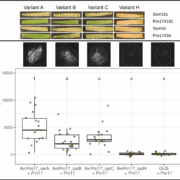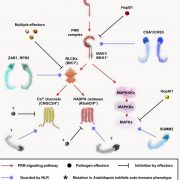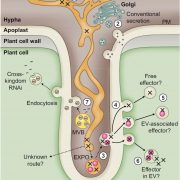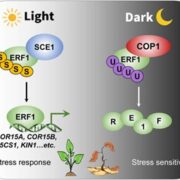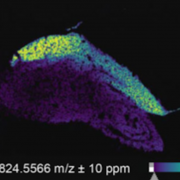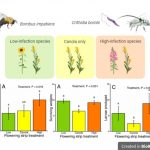Plant genes for defense against insect eggs (bioRxiv)
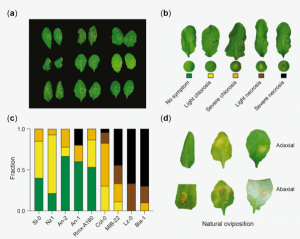 Plants can recognize eggs of herbivorous insects deposited on leaves and mount defense responses to avoid the future threat of herbivory. Similar to plant hypersensitive response against pathogens, plants can cause localized cell death to defend themselves against insect eggs. This response is called a hypersensitive-like response (HR-like). Despite similarities between HR-like and well-studied plant immune responses against pathogens, the molecular mechanisms underlying HR-like is poorly understood. Groux et al. exploited Arabidopsis natural variation in HR-like symptoms induced by egg extracts (EE) of the large white butterfly Pieris brassicae to carry out genome-wide association study (GWAS). The screening identified a strong association between HR-like symptoms and a locus containing L-TYPE LECTIN RECEPTOR KINASE-I.1 (LecRK-I.1), a previously uncharacterized gene for plant defense. Reverse genetics analysis confirmed that LecRK-I.1 is involved in EE-induced cell death. The authors found two major haplotypes of LecRK-I.1 broadly distributed across accessions and showed that this locus is under balancing selection, a type of selection in which genetic variation is maintained in a population and is commonly observed in immunity-related genes such as immune receptors. The result suggests that LecRK-I.1 might contribute to plant adaptation to specific environments. This study deepens our understanding of parallels between plant defense systems against insect eggs and pathogens and sets the stage for mechanistic interrogation of the enigmatic plant HR-like response. (Summary by Tatsuya Nobori @nobolly) bioRxiv 10.1101/2020.05.29.122846
Plants can recognize eggs of herbivorous insects deposited on leaves and mount defense responses to avoid the future threat of herbivory. Similar to plant hypersensitive response against pathogens, plants can cause localized cell death to defend themselves against insect eggs. This response is called a hypersensitive-like response (HR-like). Despite similarities between HR-like and well-studied plant immune responses against pathogens, the molecular mechanisms underlying HR-like is poorly understood. Groux et al. exploited Arabidopsis natural variation in HR-like symptoms induced by egg extracts (EE) of the large white butterfly Pieris brassicae to carry out genome-wide association study (GWAS). The screening identified a strong association between HR-like symptoms and a locus containing L-TYPE LECTIN RECEPTOR KINASE-I.1 (LecRK-I.1), a previously uncharacterized gene for plant defense. Reverse genetics analysis confirmed that LecRK-I.1 is involved in EE-induced cell death. The authors found two major haplotypes of LecRK-I.1 broadly distributed across accessions and showed that this locus is under balancing selection, a type of selection in which genetic variation is maintained in a population and is commonly observed in immunity-related genes such as immune receptors. The result suggests that LecRK-I.1 might contribute to plant adaptation to specific environments. This study deepens our understanding of parallels between plant defense systems against insect eggs and pathogens and sets the stage for mechanistic interrogation of the enigmatic plant HR-like response. (Summary by Tatsuya Nobori @nobolly) bioRxiv 10.1101/2020.05.29.122846


